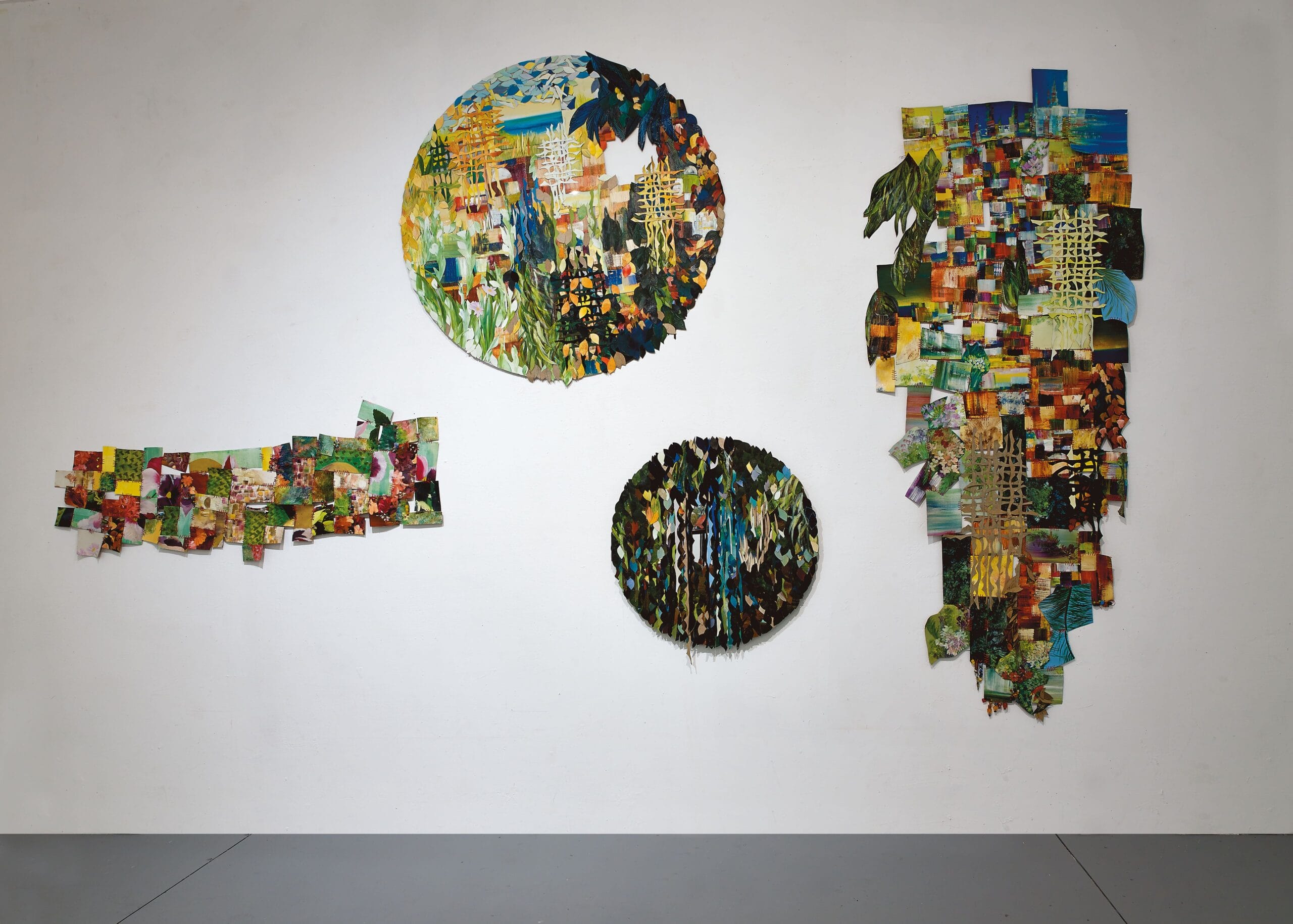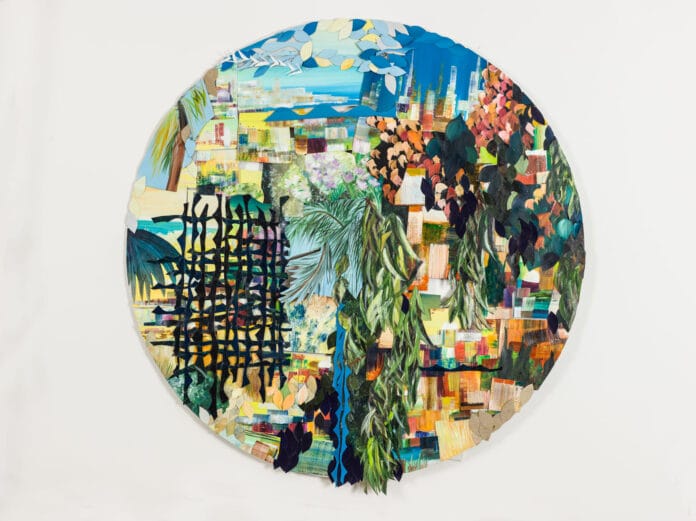Suly Bornstein Wolff was born in São Paulo, Brazil, and lives and works in Tel Aviv. She is a multidisciplinary artist who creates objects, installations, and paintings from a wide range of recycled materials. Her art reflects a deep engagement with transformation, simplicity, and the interconnectedness of human and natural worlds.
Working intuitively across multiple mediums, Wolff allows each material to guide her process. Through her hands, discarded and forgotten fragments gain new life and meaning. Her artistic language speaks through form, texture, and rhythm, merging the aesthetic with the spiritual. Every creation carries the quiet power of renewal and invites the viewer into a contemplative dialogue with the work.

Transformation Through Material
In her recent practice, Wolff has focused on using recycled wood shards and offcuts, materials often left behind by construction or craft. She transforms these fragments into geometric compositions that reveal a sensitive balance between structure and spontaneity.
Her works explore how the remnants of human activity can be reborn into new expressions of form and purpose. Each fragment of wood carries its own story of use and history, which becomes part of the artwork’s visual memory. Through careful assembly and refined composition, Wolff reshapes what was once cast aside into something harmonious and whole.
This process of reclamation reflects the artist’s ongoing dialogue with themes of simplicity, habitat, and the layered nature of human experience. It also underscores her belief that art can bridge the material and the metaphysical, bringing awareness to the overlooked and turning what is broken into something unified and meaningful.
Simplicity as a Language
Wolff’s work embraces simplicity not as reduction but as revelation. Her compositions are guided by clarity, order, and repetition, yet they remain alive with movement and emotion. The elegance of her forms stems from restraint, inviting viewers to slow down and experience the quiet resonance of each piece.
This pursuit of simplicity connects her to modernist traditions, yet her approach remains personal and contemplative. For Wolff, simplicity becomes a language of introspection and peace. It is through pared-down forms that she explores essential truths about balance, renewal, and our shared relationship to the natural world.
The Symbolism of the Rosette
Among the recurring images in Wolff’s art, the rosette or mandala holds special significance. This circular form, radiating from a central point, has deep roots in both architecture and spiritual symbolism. Traditionally, the rosette is a large, round window framed in stone, containing stained glass panels arranged in petal-like segments that resemble a rose.
The rosette embodies unity and expansion, connecting the viewer to ideas of growth, harmony, and light. Its circular structure mirrors the cycles of nature and the patterns of life itself. Wolff has drawn upon this image throughout her career, continually reinterpreting it as a symbol of wholeness and transformation.
The Soft Vitrage Series
In her latest series, Soft Vitrage, Wolff reimagines the traditional stained glass window using an entirely different approach. Each work is a circle made of hundreds of small leaf-like shapes cut from her own oil on canvas paintings. Rather than using glass, she transforms fragments of her previous works into new compositions that echo the structure of the rosette.
This process represents both continuity and change. By cutting pieces from her own paintings, she performs an act of renewal. What was once a complete canvas becomes part of something larger, something reassembled into a new visual harmony. The leaves, individually cut and layered, form radiant circular patterns that pulse with color and light.
Through this method, Wolff replaces the sharpness of glass with the softness of painted canvas. The transformation of a traditionally rigid medium into something pliable and tactile brings a sense of intimacy to the work. Soft Vitrage becomes a meditation on the dualities of fragility and strength, destruction and creation, tradition and reinterpretation.
Reversing the Traditional
Wolff’s Soft Vitrage series represents an intentional reversal of expectations. Stained glass is known for its brittleness and transparency, yet her version is gentle, opaque, and flexible. The cutting and reassembling of canvas pieces turns the act of fragmentation into one of healing and regeneration.
Each circular work radiates from a single center, symbolizing wholeness and the interconnectedness of all parts. The rhythmic repetition of leaves and curved forms gives the impression of organic growth, like petals unfurling toward the light. Through color, movement, and structure, these pieces convey both order and freedom, stability and flow.
In this way, Wolff’s reinterpretation of stained glass becomes a metaphor for human experience. It reminds us that even what is broken can be transformed, that softness can hold as much strength as glass, and that beauty often emerges from the process of rebuilding.
A Meditation on Existence
Across her work, Suly Bornstein Wolff reflects on the relationships between matter, memory, and being. Her art does not merely depict but embodies transformation. The repeated acts of cutting, layering, and assembling mirror the cycles of life and change that define human existence.
Her materials tell stories of use and renewal. What she creates is both object and meditation, inviting viewers to contemplate the balance between presence and impermanence. In this sense, her work transcends material boundaries and becomes a reflection on the human condition, the way we gather, rebuild, and seek harmony amidst complexity.
Conclusion: The Poetry of Renewal
Suly Bornstein Wolff’s art stands at the intersection of material experimentation and spiritual reflection. Through recycled wood, painted canvas, and circular motifs, she develops a language of quiet strength and poetic balance.
The Soft Vitrage series embodies her lifelong fascination with transformation. By softening the rigid tradition of stained glass, she opens a space for gentleness, continuity, and renewal. Her works encourage viewers to look beyond surface beauty and discover the deeper harmony that arises when the broken is reimagined into wholeness.
Through her art, Wolff reminds us that creation is an act of restoration that, within every fragment, lies the potential for new life, and within every circle, a story of endless return.


